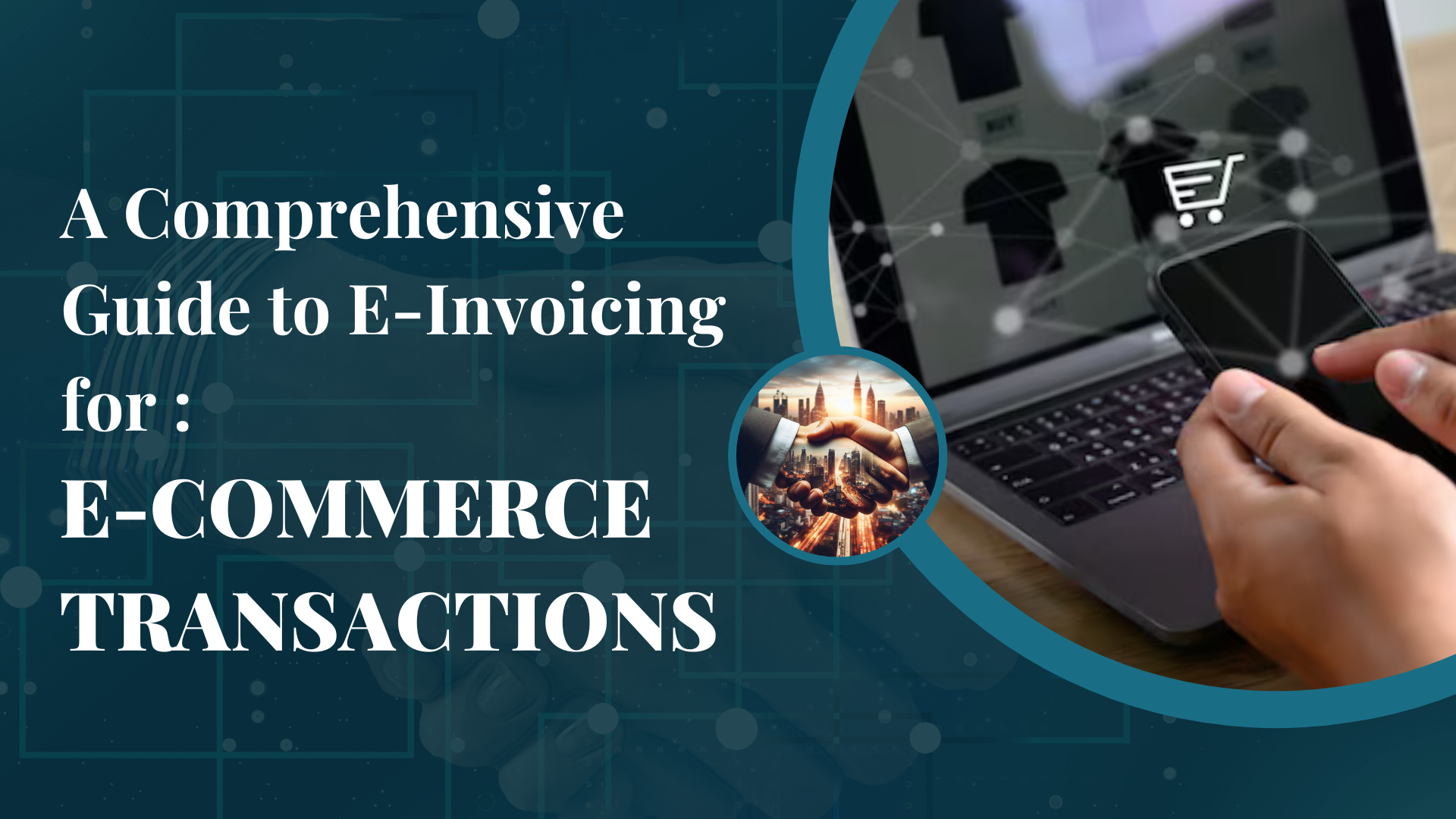-
Dec, Fri, 2024
A Comprehensive Guide to E-Invoicing for E-Commerce Transactions
Introduction
E-commerce transactions involve the sale or purchase of goods or services conducted over networks designed for receiving or placing orders. While the payment and delivery of goods or services may occur offline, the transaction itself is initiated digitally.
This guide explores how e-invoicing impacts e-commerce platform providers, purchasers, and merchants, providing clarity on compliance with tax legislation and facilitating seamless transactions.

Key Concepts of E-Invoicing in E-Commerce
What is an E-Commerce Transaction?
An e-commerce transaction refers to any sale or purchase of goods or services conducted over networks designed for placing orders. These transactions can occur between various parties, including individuals, businesses, and government entities. Payment and delivery may take place offline or through other non-digital methods.
E-Invoice Issuance Scenarios
1. Issuance of E-Invoice from E-Commerce Platform Provider to Purchaser
Current Practice
E-commerce platform providers issue invoices, bills, or receipts to purchasers to document transactions. Upon implementing e-invoicing, platform providers assume the role of the supplier to facilitate the issuance of:
-
E-Invoice: When requested by the purchaser.
-
Receipt: When no e-invoice is requested.
Compliance Notes
Issuing an e-invoice ensures compliance with tax laws such as the Income Tax Act 1967 and does not alter the commercial liability or nature of the transaction.
Consolidated E-Invoicing
For purchasers who do not request an e-invoice, providers can submit a consolidated e-invoice to the Inland Revenue Board of Malaysia (IRBM) within seven calendar days after month-end, barring specific exceptions.
Real-Life Scenario
Imagine a customer purchases a smartphone from an e-commerce platform. The platform issues a receipt for the transaction. If the customer later requests an e-invoice for tax purposes, the platform generates and sends it electronically, ensuring compliance with tax regulations.
2. Self-Billed E-Invoice Issuance to Merchants and Service Providers
Current Practice
Merchants and service providers receive payments from e-commerce platforms for goods sold or services rendered. Post e-invoice implementation, platform providers issue self-billed e-invoices to these merchants and service providers.
Compliance Notes
Self-billed e-invoices are issued solely to comply with tax laws and do not alter the commercial liabilities of the transaction. The issuance frequency aligns with existing statement issuance practices, such as daily or monthly.
Real-Life Scenario
A clothing merchant sells items via an e-commerce platform. The platform collects payments from buyers, deducts its service fee, and issues a self-billed e-invoice to the merchant reflecting the net payout.
3. E-Invoice Issuance for Platform Charges
Current Practice
E-commerce platforms charge merchants for using the platform. After implementing e-invoicing, the platform issues an e-invoice for these charges to the merchant.
Compliance Notes
This ensures accurate reporting and compliance with tax laws, with the e-commerce platform acting as the supplier.
Real-Life Scenario
A service provider subscribes to an e-commerce platform’s premium membership plan. The platform issues an e-invoice to the service provider detailing the subscription fee and applicable taxes.
Frequently Asked Questions (FAQ)
Q1. Who is responsible for issuing the e-invoice in e-commerce transactions?
The e-commerce platform provider acts as the supplier responsible for issuing e-invoices to purchasers, merchants, or service providers as applicable.
Q2. What happens if a purchaser does not request an e-invoice?
The platform provider can aggregate such transactions and submit a consolidated e-invoice to the IRBM within seven days after the end of the month.
Q3. Do merchants need to issue e-invoices?
No, the responsibility lies with the e-commerce platform provider. Merchants and service providers do not need to issue separate e-invoices for transactions conducted on the platform.
Q4. What details are required in an e-invoice?
An e-invoice must include data fields outlined in the e-Invoice Guideline, such as transaction details, purchaser’s information, and tax-related data.
Q5. Does issuing an e-invoice alter the nature of the transaction?
No, e-invoicing is a compliance measure and does not affect the commercial nature or liabilities of the transaction.


